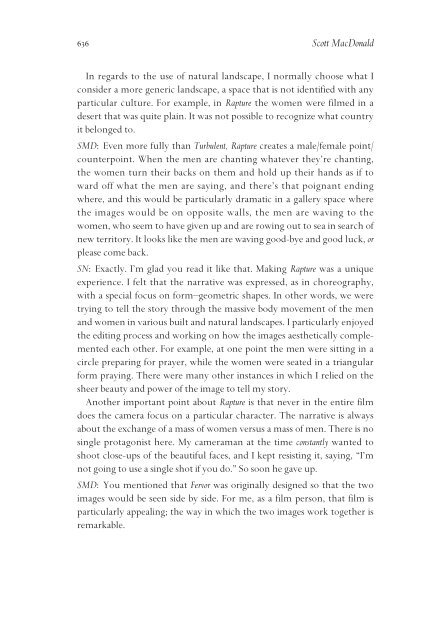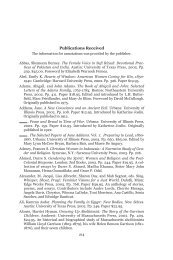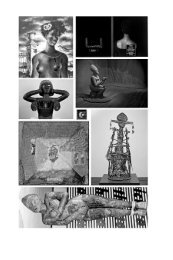An Interview with Shirin Neshat - Feminist Studies
An Interview with Shirin Neshat - Feminist Studies
An Interview with Shirin Neshat - Feminist Studies
You also want an ePaper? Increase the reach of your titles
YUMPU automatically turns print PDFs into web optimized ePapers that Google loves.
636 Scott MacDonald<br />
In regards to the use of natural landscape, I normally choose what I<br />
consider a more generic landscape, a space that is not identified <strong>with</strong> any<br />
particular culture. For example, in Rapture the women were filmed in a<br />
desert that was quite plain. It was not possible to recognize what country<br />
it belonged to.<br />
SMD: Even more fully than Turbulent, Rapture creates a male/female point/<br />
counterpoint. When the men are chanting whatever they’re chanting,<br />
the women turn their backs on them and hold up their hands as if to<br />
ward off what the men are saying, and there’s that poignant ending<br />
where, and this would be particularly dramatic in a gallery space where<br />
the images would be on opposite walls, the men are waving to the<br />
women, who seem to have given up and are rowing out to sea in search of<br />
new territory. It looks like the men are waving good-bye and good luck, or<br />
please come back.<br />
SN: Exactly. I’m glad you read it like that. Making Rapture was a unique<br />
experience. I felt that the narrative was expressed, as in choreography,<br />
<strong>with</strong> a special focus on form–geometric shapes. In other words, we were<br />
trying to tell the story through the massive body movement of the men<br />
and women in various built and natural landscapes. I particularly enjoyed<br />
the editing process and working on how the images aesthetically complemented<br />
each other. For example, at one point the men were sitting in a<br />
circle preparing for prayer, while the women were seated in a triangular<br />
form praying. There were many other instances in which I relied on the<br />
sheer beauty and power of the image to tell my story.<br />
<strong>An</strong>other important point about Rapture is that never in the entire film<br />
does the camera focus on a particular character. The narrative is always<br />
about the exchange of a mass of women versus a mass of men. There is no<br />
single protagonist here. My cameraman at the time constantly wanted to<br />
shoot close-ups of the beautiful faces, and I kept resisting it, saying, “I’m<br />
not going to use a single shot if you do.” So soon he gave up.<br />
SMD: You mentioned that Fervor was originally designed so that the two<br />
images would be seen side by side. For me, as a film person, that film is<br />
particularly appealing; the way in which the two images work together is<br />
remarkable.




